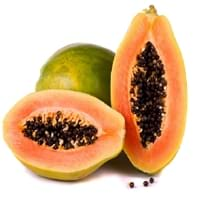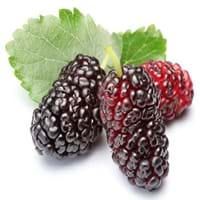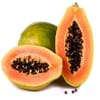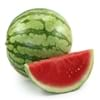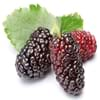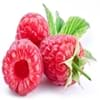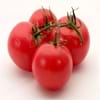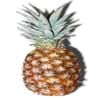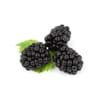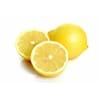Health Benefits
Arthritis prevention, Asthma treatment, Cancer prevention, Heart care, Prevents macular degeneration, Prevents rheumatoid
Anti-aging benefits, Boosts immune system, Cancer prevention, Flu treatment, Hair care, Heart care, Improves eye vision, Increases metabolic rate, Kidney stone treatment, Maintains healthy cholesterol level, Skin cleansing, Skin rejuvenation, Treatment of common cold, Treatment of skin Diseases
General Benefits
Anti-inflammatory properties, Boosts immune system, Digestive aid, Healing of wounds, Maintains healthy cholesterol level, Strengthens bones
Boosts immune system, Controls blood sugar levels, Flu treatment, Improves eye vision, Maintains healthy cholesterol level, Treatment of common cold
Skin Benefits
Anti-aging benefits, Hydrates skin, Skin revitalization, Treatment of acne, Treatment of dark spots
Anti-aging benefits, Skin cleansing, Treatment of skin diseases
Hair Benefits
Good conditioner, Promotes longer and healthier hair, Softening mask, Treatment of dandruff
Protects hair, Regulates hair growth
Allergy Symptoms
Abdominal pains, Carotenemia on excessive consumtion, Latex Allergy
Breathing difficulty, Itching, Nasal congestion, Redness of eyes, Runny nose, Sneezing
Side Effects
Allergic reaction, Skin problems, Possibly unsafe during pregnancy
Decrease in blood sugar levels, Allergic reaction
Best Time to Eat
As a snack in the late afternoon, Don't consume at night and before bed, Don't eat after meal
Best if taken as a breakfast (or empty stomach), As a snack in the late afternoon, Don't consume at night and before bed, Eat the fresh ones, avoid mixing with any other foods, don't eat after meal., Morning time (before lunch)
Vitamin B5 (Pantothenic Acid)
Not Available
Vitamin C (Ascorbic Acid)
Vitamin K (Phyllochinone)
Calories in Fresh Fruit with Peel
Not Available
Calories in Fresh Fruit without Peel
Not Available
Calories in Canned Form
Not Available
Type
Melon, Tree fruit
Berry
Season
All seasons
Spring, Summer
Varieties
Coorg Honey Dew, Pusa Dwarf, Pusa Giant, Pusa Majesty, Pusa Delicious, Pusa Dwarf, Solo, Ranchi, Taiwan-785 and Taiwan-786
Charparral, Pendula, Teas, Bellaire and Lingan
Color
Orange, Yellow
Pink, Purple, White
Taste
Luscious, Sweet
Tart
Origin
Mexico, Central America
China
Soil Type
Rocky, Sandy, Well-drained
Clay, Loam
Climatic Conditions
Warm, Without frosts
Sunny
Facts about
- Papaya seeds show contraceptive effects in male monkeys.
- Their seeds are used as a replacement for black pepper in some nations due to peppery taste.
- Papaya is known by funny names like paw paw or papaw and the mamao.
- It can take up to 10 years for a tree to produce mulberry fruit.
- Mulberry leaves are fed to silkworms to enhance silk production.
- In Germany, they say that devil uses root of mulberry tree to polish his boots.
Other Countries
Brazil, Indonesia, Mexico, Nigeria
Colombia, Egypt, India, Indonesia, Kenya, Mexico, Pakistan, Peru, Russia, United States of America
Top Importer
United States of America
Not Available
Top Exporter
Mexico
China
Botanical Name
Carica papaya
Morus Alba
Synonym
Not Available
Morus atropurpurea or Morus multicaulis
Subkingdom
Tracheobionta
Tracheobionta
Division
Magnoliophyta
Magnoliophyta
Class
Magnoliopsida
Magnoliopsida
Subclass
Dillenhidae
Alismidae
Order
Brassicales
Rosales
Family
Caricaceae
Moraceae
Species
C. papaya
M. alba
Generic Group
Papaya
Mulberry
Difference Between Papaya and Mulberry
We might think that Papaya and Mulberry are similar with respect to nutritional value and health benefits. But the nutrient content of both fruits is different. Papaya and Mulberry Facts such as their taste, shape, color, and size are also distinct. The difference between Papaya and Mulberry is explained here.
The amount of calories in 100 gm of fresh Papaya and Mulberry with peel is Not Available and 43.00 kcal and the amount of calories without peel is 43.00 kcal and Not Available respectively. Thus, Papaya and Mulberry belong to Low Calorie Fruits and Low Calorie Fruits category.These fruits might or might not differ with respect to their scientific classification. The order of Papaya and Mulberry is Brassicales and Rosales respectively. Papaya belongs to Caricaceae family and Mulberry belongs to Moraceae family. Papaya belongs to Carica genus of C. papaya species and Mulberry belongs to Morus genus of M. alba species. Beings plants, both fruits belong to Plantae Kingdom.
